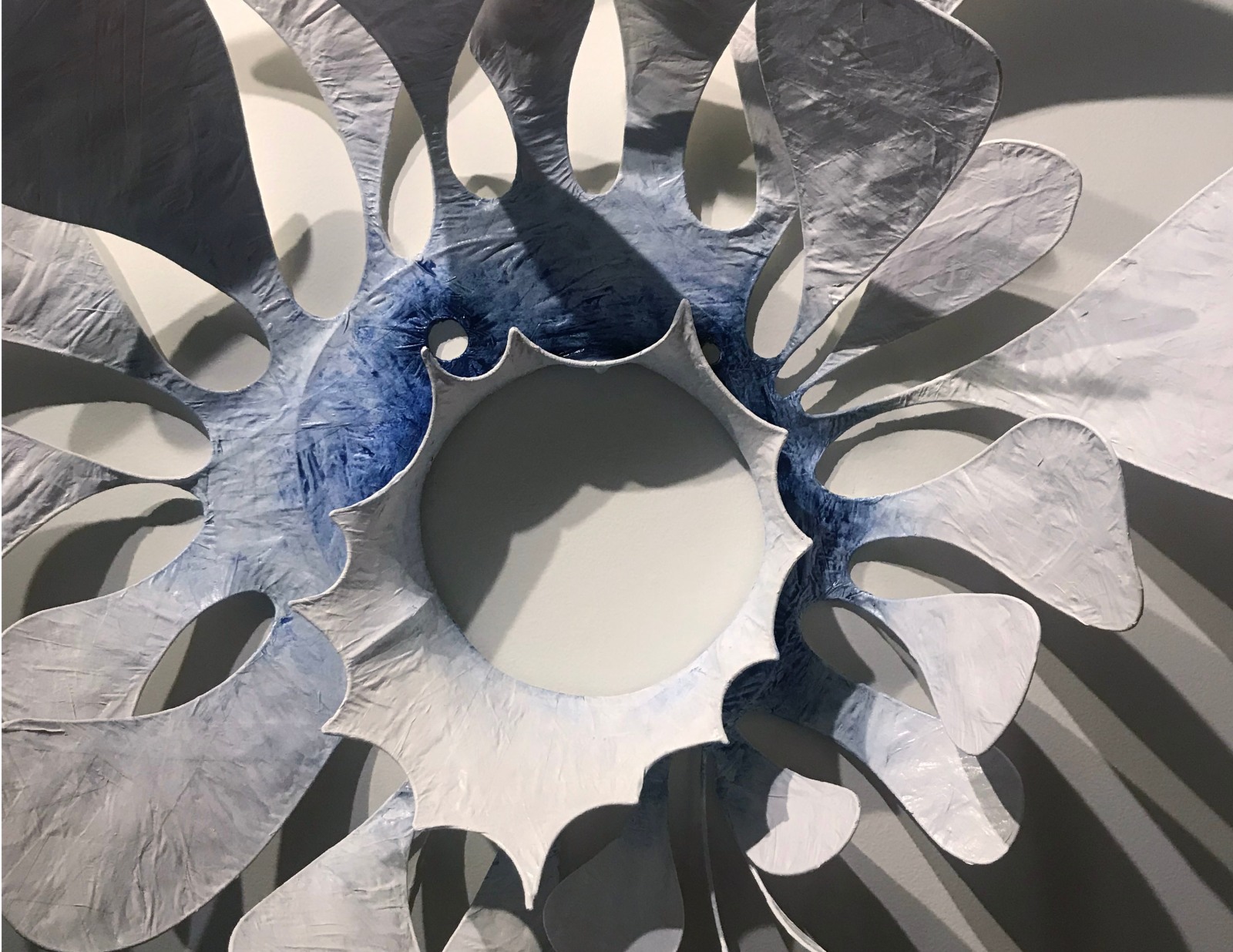
It is safe to say that little, if any, art is created in a vacuum. But rarely is the connection so direct as in Ranjani Shettar’s exhibition “Earth Songs for a Night Sky,” at The Phillips Collection. It is the 27th Intersections contemporary art project at the Phillips, a series that gives the selected artists an opportunity to engage with both the museum’s art and its spaces.
Shettar’s seven sculptural pieces are on display in two galleries and the staircase of the original Phillips house. They are mounted on walls and hang from the ceiling, making shadows that enhance their three dimensions. Shettar created these sculptures specifically for the exhibition in response to works she chose from the Phillips’s permanent collection. She was inspired by Wassily Kandinsky’s rarely shown 1913 book “Klänge” (Sounds), which features 56 woodcuts and was published just after the artist embraced abstraction, along with Paul Klee’s late paintings from the 1930s, “Arab Song,” “Efflorescence,” and “Figure of the Oriental Theater.” They are also on view.
“To work with such masterpieces is like being in a candy store, it’s difficult to choose,” Shettar said during a recent talk at the Phillips. “I like to make things that are playful, and I saw that in these artists.”
Shettar was born in 1977 in Bangalore, India, but now lives and works in a remote area in the Southern part of that country. She is inspired by elements of her environment, like the changing skies, monsoon rains, and lush vegetation, and uses traditional materials and techniques to create her lively and lyrical work. She has had solo shows at the Institute of Contemporary Art in Boston, the San Francisco Museum of Modern Art, and the Metropolitan Museum of Art, among others.
“There’s no way you can separate life and art,” she said. “I want my sculptures to occupy the same space as us, and not be on a pedestal. I really care about my ecological footprint and choose materials that are nontoxic.”
It’s interesting to think of Shettar in her studio in rural India, inspired by the artwork of European men from the early decades of the last century, finding a connection.
-Ann Greer